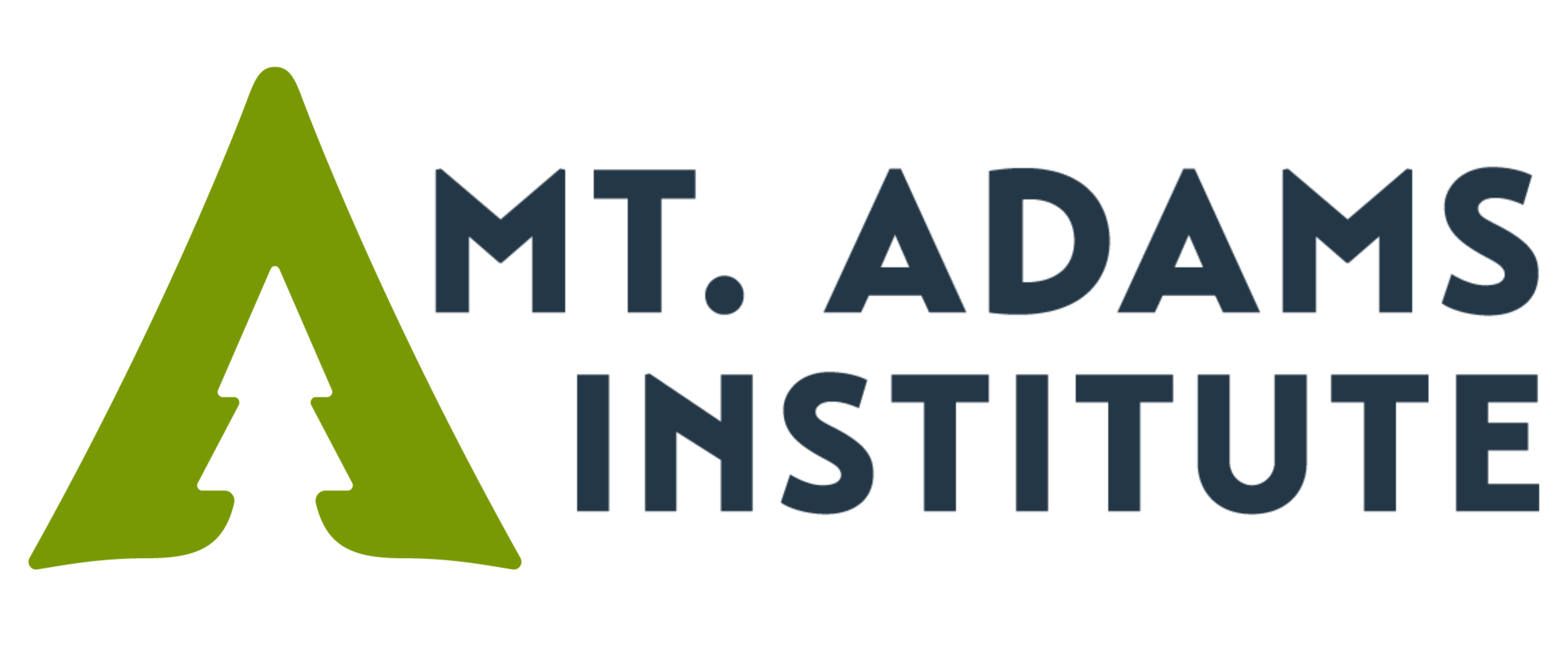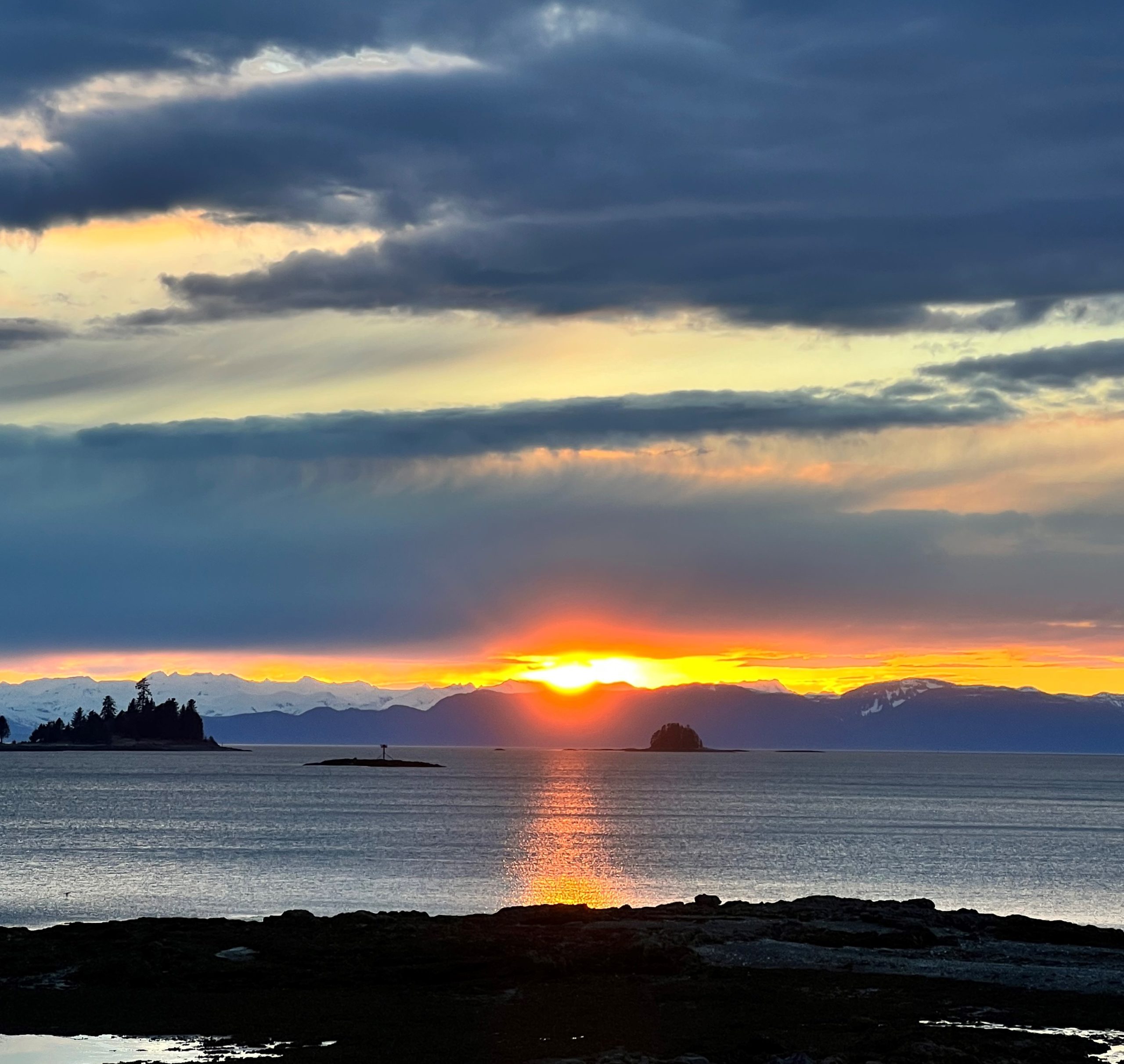Taran Snyder; a VetsWork intern
Abstract
VetsWork intern Taran Snyder, shares a couple of the stories and fun pictures of his first few scientific adventures out to the surrounding environments in southeast Alaska. The primary focus of these trips to the field were to clear fish passes among key creeks throughout the local region to allow for anadromous Salmonid species to access fresh water spawning habitat. This is a vital resource to the subsistence of the local people in southeast Alaska and holds a high priority each season.
Introduction
Mt. Adams Institute is the coordinator for a program known as VetsWork, a volunteer internship program through AmeriCorps. I was provided the opportunity to apply for the natural resource specialist position in Petersburg, AK in the Petersburg Ranger District of the US Forest Service (USFS). Luckily, I was accepted into this position for the 45-week AmeriCorps internship to work with Eric Castro, a fish biologist in Petersburg and his cohort for the time. During my first few months here, I have been exposed to a plethora of research projects, maintenance of fish passes, amphibian research opportunities, Geographic Information System (GIS) and much more. Throughout the rest of my time here, I am expected to work with Eric Castro and develop a project for myself and continue to learn what it is to be a specialist in the aquatics and silviculture divisions of the Forest Service in the Petersburg Ranger District. I will be sharing a few of my early field season trips conducting fish pass maintenance and clearing operations.
Methods and Materials
Provided with the list of equipment below, conduct fish pass clearing and maintenance at Irish Creek fish pass, Slippery Creek fish pass, St. John’s fish pass, and Virginia Lake fish pass.
- Transportation (boat, car/truck, float plane)
- Set of objectives
- Maps
- Waders
- Wading boots
- Trail flagging
- Clippers
- Helmet
- Bear spray
- Radio
- InReach
- Rain gear
- Lodging or camp gear
Ensure that proper documentation of fish pass conditions is recorded to assess the viability of conducting repair later to ensure the longevity of fish passes in southeast Alaska.
Results
Irish Creek and Slippery Creek fish passes were cleared successfully from 25-27 April on Kupreanof Island. The crew, VetsWork intern Taran Snyder and Forest Service technician Eric Johnson, stayed in Kake at the Forest Service bunkhouse and conducted fish pass maintenance during the time frame with 100% success. Refer to provided pictures 1, 2, and 3.*
*pictures are in the link at the bottom of this report
St. John’s and Virginia Lake fish passes were cleared successfully from 4-6 May on Zarembo Island and the mainland. The crew, the same listed as above, stayed on Zarembo Island at St. Johns Forest Service field house and boated to the mainland to conduct fish pass clearing and maintenance for Virginia Lake. A USFS provided rig was used to travel to the St. Johns fish pass. Both fish passes were successfully cleared within the trip’s timeframe with 100% success. Refer to provided pictures 4, 5, and 6.
Discussion
The fish pass clearing, and maintenance was conducted in two trips instead of one continuous trip. This allowed for the crew to get sufficient rest and to conduct after trip After Action Reports (AARs). The AARs were used to improve the second trip to Zarembo Island and increase efficiency and safety of the crew. VetsWork intern Taran Snyder, was exposed to multiple different fish pass designs, both steep passes and weir systems, and worked diligently to clear them for salmon and steelhead runs upriver for the early season spawning. All passes were cleared with 100% effectiveness and no injuries or incidents occurred during the trip.
From a personal standpoint, these trips were a sight to behold, taking marked game trails through the backcountry of southeast Alaska to the creeks and streams that we were working on. The diverse selection of ecosystems that I have had the opportunity to encounter while working during the beginning of the field season is wonderful and something I look forward to every time the opportunity arises. I have been exposed to and began my boating certification through the USFS and look forward to finishing my boating certification on the 22’ and 24’ skiffs that we are regularly using and anchoring to reach fish passes.
Our first trip was to Irish Creek and Slippery Creek fish passes. We stayed in Kake on northwest Kupreanof Island during our overnights. Image 1 is the view from the Kake bunkhouse, looking west during the sunset over Baranof Island in the distance. This picture goes to show the absolute beauty that southeast Alaska contains and the raw wild that remains here, evident from whales, otters, and porpoises in the waters between. We went to Irish Creek first for the clearing and maintenance mission. We anchored our boat in Rocky Pass and used a small zodiac paddle boat to get to shore. We walked a flag marked game trail through the wilderness, crossing muddy streams, scaling steep stretches of untouched forest, and crossing wide and boggy muskegs to get to Irish Creek approximately 1.75 miles in. Irish Creek is a unique fish pass as it is a weir system with 22 individual weirs enclosed in concrete like a tunnel. One of the crew, being myself, entered the fish pass and cleared it of any debris that was blocking the passage for fish with only the aid of a headlamp, spare batteries and parts, and the flow of water to guide me. In picture 2, you can see me in front of the entrance to the enclosed weir channel and clearing it of Beaver debris that had piled up there over the winter. It was a surreal experience that I recommend anybody that has an opportunity should experience. The following day we went to Slippery Creek fish pass and used the same method to get to shore as we did with Irish Creek. The hike in was about the same distance into the backcountry where we experienced a myriad of conditions on the hike in, from an excessively slippery stream walk to scaling steep faces of hills leading to the pass. This fish pass was a double steep ladder design which required some skinny thinking to clear the debris which had firmly blocked it. In picture 3, you can see me in one of the blocked steep ladders that is blocked with logs and rocks, channeling my best skinny thinking to overcome the tight enclosure. It was hard work, but nonetheless it was completed. The falls at Slippery Creek were amazing and sight that I will not forget.
Our next trip out, we went to Zarembo Island and stayed at the USFS St. John’s field camp there. Picture 4 shows the view from the back deck of the building that is there overlooking the estuary and outlet of St. John’s Creek. We took a USFS truck to the trailhead to get to the St. John’s fish pass where we hike downhill to the fish pass, roughly 1 mile below. Picture 5 shows me on top of the steep ladder fish pass, attempting to clear a bad rock and log blockage inside the pass itself. The entire time, the roar of the waterfall to my right (left in the picture) is making communication with my other crewmember difficult but doable. The experience there reminds me how small I as an individual and I continue to remain humble in that fact. Our final fish pass we cleared and documented well was Virginia Lake fish pass. We took our 24’ skiff to the mainland to clear this fish pass and anchored outside of the creek outlet. One fun fact about this fish pass is it is the only fish pass in southeast Alaska that is on the salt water. It is a combination steep ladder and a weir system that works beautifully to pass fish up to Virginia Lake, roughly one mile up the creek. Picture 6 is a selfie taken by me on top of the fish pass next to the falls at Virginia Lake fish pass.
Of all the fish passes I have now visited and worked on in southeast Alaska (8 total), Virginia Lake is the one that I was most impressed with in both its design and the natural beauty of the location. The falls there have a deep power and demand respect from all who visit its beauty.
Conclusion
Alaska continues to shock me with its endless beauty and countless dangers every day I am exposed to it. I have seen bears, moose, deer, elk, and even wolves in my time here and would not trade a single moment out here for anything else. I have become more involved with a lot of the hydrology science side as of late and continue to aid the aquatics department in their mission to create, restore, and preserve a land for all.
Appendix A
Picture 1 – Sunset over Baranof Island from the Kake USFS bunkhouse. Photo credit: Taran Snyder, VetsWork.
Picture 2 – VetsWork intern, Taran Snyder, clearing Beaver debris from Irish Cr fish pass entrance. Photo credit: Eric Johnson, USFS.
Picture 3 – VetsWork intern, Taran Snyder, getting his body into a steep ladder fish pass to clear it of debris from the winter before, making it passable for salmon. Photo credit: Eric Johnson, USFS.
Picture 4 – Sunrise to the east over Zarembo Island from the USFS St. Johns field camp location. Photo credit: Taran Snyder, VetsWork.
Picture 5 – VetsWork intern, Taran Snyder, clearing the steep ladder pass at St. Johns fish pass on Zarembo Island. Photo credit: Eric Johnson, USFS.
Picture 6 – VetsWork intern, Taran Snyder, takes a selfie next to the waterfall at Virginia Lake fish pass. Photo credit: Taran Snyder, VetsWork.


